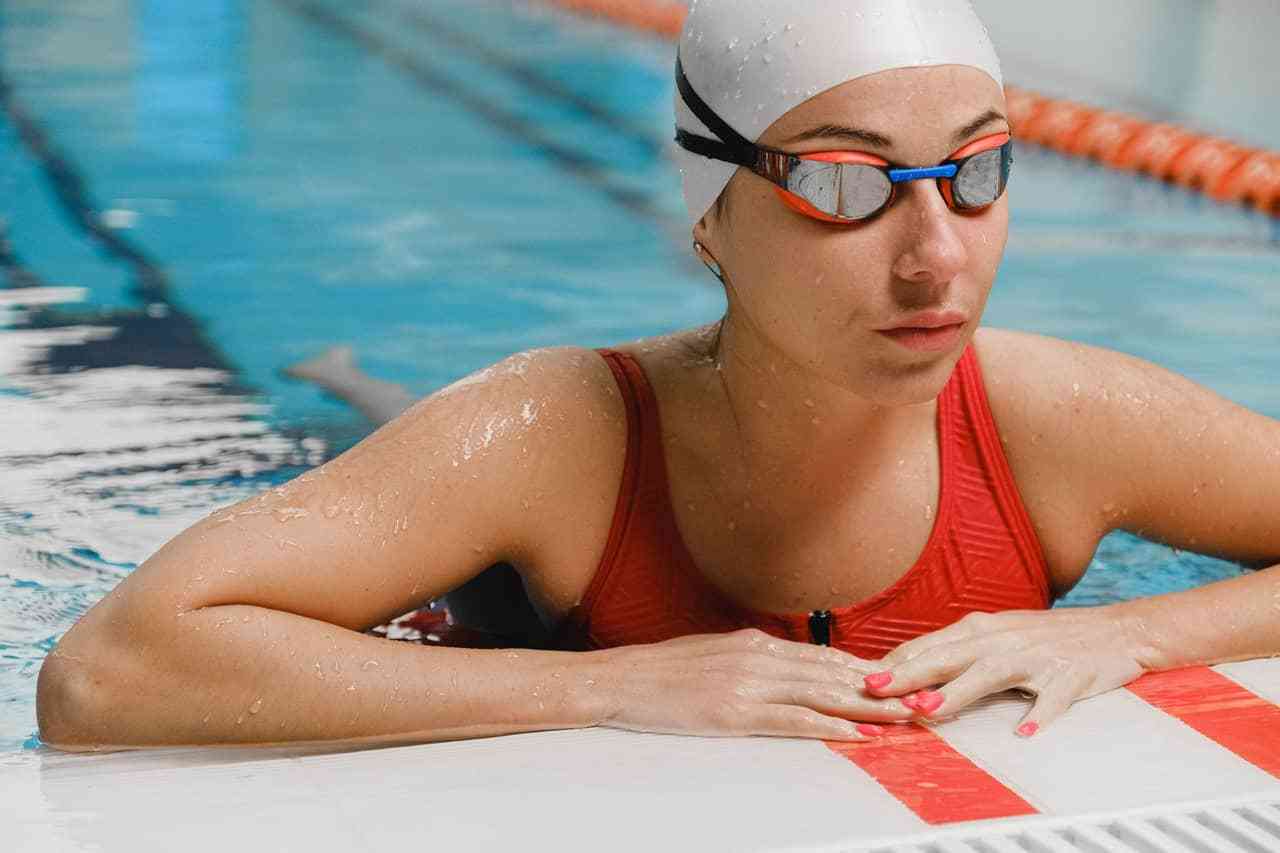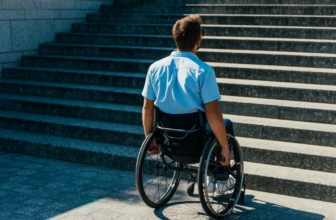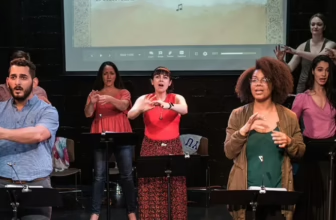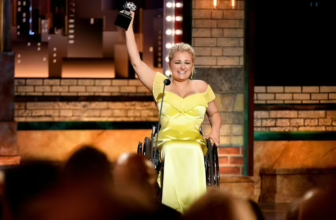If you are living with complete or partial vision loss, it can seem challenging to stay physically active. The good news is that vision loss doesn’t have to mean giving up sports and exercise. A person who is blind or has a visual impairment can practice almost any kind of sport.
In this article, we will focus mainly on sports, physical activities, and exercises for recreational, entertaining, leisure, and social inclusion purposes, and not so much on professional and competitive sports.
You will learn:
What are the common challenges for people who are blind or have vision loss who want to practice sports and physical exercise?
Fear of falling and injuries
It is not unusual for people with visual impairments to experience fear of outdoor spaces, getting lost, sustaining a fall, or an accident. This is more common in those who are older and/or have additional physical impairments, and in people whose vision has recently been lost or worsened. A cross-study of 215 persons with visual impairments in Japan showed that people with significant vision loss can have low levels of physical activity and are at risk for locomotor dysfunction. According to the authors, people with impaired vision are more prone to avoid physical activity due to fear of falls, accidents, and perceived risks. This may have a negative effect on their general health and may worsen existing health problems, such as diabetes. Worsened general health may contribute to exacerbating visual impairments, so physical inactivity and vision loss may form a “vicious cycle.”
The best solution for this problem is getting a thorough orientation and mobility training. This will help you gradually overcome your fear of movement and improve your skills for independent mobility. The training may include learning the basic safety techniques for navigating indoors, the sighted guide techniques, the mobility techniques with a white cane, and learning some routes, and/or other lessons, depending on your individual needs and preferences.
If you are still dealing with the shock of recently worsened or lost vision and if you are still adapting to your new circumstances, don’t hesitate to find professional support from a therapist or a counselor.
Lack of coaches and PE teachers trained to work with people with low vision
Unfortunately, many coaches and trainers don’t have any experience and knowledge when it comes to adapting the activities for participants with impaired vision.
A study on experiences of Individuals With Visual Impairments in Integrated Physical Education showed that the participants felt ‘put to the side’, frustrated, and neglected during the PE lessons. They reported “debilitating feelings from physical educators’ attitudes” who treated them differently because of their visual disability.
Another study evaluated the perspectives of individuals with visual impairment toward inclusion and the inclusiveness of their integrated PE experiences. The participants reported feeling like “a misfit: a missing sense of belonging, acceptance, and value;” “excluded, very pushed to the side: lack of access to activity participation;” and “Even though it sucked, I do agree with [integrated settings.]”
Negative exposures like these can leave a lasting memory and make a person give up physical exercise for a long time. This is especially significant if these experiences happen during one’s childhood and teenage years when most people are vulnerable and haven’t yet formed self-advocacy skills.
Trainers who work with people with visual disabilities have to be open to the trainees’ feedback and willing to discuss together how the activities can be made inclusive for everyone. Very often, some easy, cheap, and simple adjustments can make all the difference, such as using a ball with bells, putting a rope or a plastic wire as a guiding line, saying each participant’s name when their turn comes, or sticking bright-colored stripes to the equipment. Sometimes, it is enough to adapt just the explanations and methods of training, focusing on precise and non-vision-based instructions. For example, not saying “jump like this,” or “go over there,” especially to a person who is totally blind and can’t see what you are doing or pointing at. Choosing non-competitive and teamwork-focused exercises and activities can also make a big difference.
Poor level of awareness about people with visual impairments in sports
A study of PE teachers and 582 students studying to become PE teachers in Hungary showed that most students had no idea how to include people with visual disabilities in sports, and had generally no idea about blindness itself and the needs and challenges of blind people. The good news is that most of them were open to working with blind people and declared a genuine desire to help — they just didn’t have the experience and knowledge of how to do it. The authors concluded that the main challenge for sports for people with visual disabilities is “based on personal and educational reasons.” The lack of trained professionals who can organize and actively participate in inclusive sports activities is, according to the study, a much more serious problem than the accessibility of sports venues and facilities. As a solution, the authors suggest “a centrally organized and directed new educational approach with a focus on disability-inclusive topics and subjects.”
I am blind or have low vision. What do I have to consider before starting a sports activity or an exercise program?
It is a generally accepted rule that before starting any exercise program, you should discuss it with your doctor or health care provider. They will help you choose an activity that is best suited for your needs and abilities. If you are living with a chronic disease or you have sustained a significant injury in the past, it is especially important to ask for a professional opinion from a medical doctor on which exercises would be safe for your condition.
If you have an eye condition that is not stable and permanent, but progressive and varying in time, any lifestyle changes can affect it, including physical activity. So it is essential that you discuss this with a doctor, preferably an ophthalmologist. Have in mind that some physical activities such as lifting heavy weights, high-intensity running, or jumping, can cause elevated intraocular pressure. Some contact sports involve a risk of falling and getting hit on the head too. Such activities can be dangerous to you if you are living with glaucoma or retina detachment, for example, and you should choose something with lower impact and intensity. It is known that lying on your back can also increase intraocular pressure, so you should focus on exercises in a sitting or standing position.
The kind of activities you choose should be enjoyable for you and should improve your physical and mental health and quality of life. They have to be safe, sustainable, and accessible. It’s even better if your activities of choice can provide an opportunity to connect with people, feel part of a team, and work together towards a common goal.
What are some specialized sports for people with visual disabilities?
Goalball
Goalball originated as a rehabilitation sport for veterans after World War II. Goalball is a team sport played with a ball that has bells attached to it. The game relies on hearing instead of sight. All players wear eye covers to simulate total blindness, no matter each player’s level of vision loss. Goalball is played competitively on an international level, including in the Paralympic games and it’s one of the most loved and famous sports for people with visual impairments. The official rules are provided by the International Blind Sports Federation.
Showdown
Showdown is very similar to air hockey or table tennis. The advantages of this game are that it requires inexpensive equipment, it can be easily stored and maintained, and it doesn’t require too much space. The equipment consists of a specially adapted table, paddles to hit the ball with, an audible ball, and a protective glove. Showdown is popular among people with and without visual impairments. Sighted people, of course, are not allowed to play in showdown tournaments in the International Blind Sports Federation.
Beep Baseball
Beep baseball was developed in 1976 in the USA as an opportunity for people with vision loss to play baseball. It is extremely popular not only in the U.S. but also in UK, Germany, Italy, and France. Each year there are local, state, and regional tournaments. As the name suggests, the ball that is used makes a beeping sound. Beep baseball is a quite strenuous and demanding sport for people who are very athletic and enjoy physical challenges.
Which sports can I practice with a sighted guide?
Swimming
Swimming can be easily adapted and made accessible for swimmers with visual impairments. All it takes is marking the lanes with bright-colored and tactile floating markers. A sighted guide, known as a “tapper,” is positioned at the end of the lane in order to observe the swimmer’s movements and tap them with a long device when it’s time to turn around. An auditory clue can also be used for this purpose — for example, putting a device at the end of each lane to produce sound when the swimmer reaches the end.
Running or Jogging
Blind runners usually run with a sighted guide and use a short rope that keeps them both in contact. There is no special equipment needed, but the connection, verbal and non-verbal communication with the guide is essential.
Tandem Cycling
Tandem cycling is another inexpensive and accessible way to exercise outdoors and have fun. The sighted cyclist takes the front seat and is responsible for describing the surroundings and obstacles, and giving directions. The cyclist with a visual disability sits behind and doesn’t steer, but it’s important that they work as a team.
Skiing
A sighted guide who follows after or goes in front of the skier with visual impairment describes the environment and gives instructions. A portable voice amplifier with a microphone can be used to keep in close contact with the guide.
Which sports can I practice as a blind person with very little or no need of adapting?
Many sports can be practiced by adults and children with vision loss with very little or no need of adapting. No special equipment or sighted guides are necessary, however, it is essential that the coach or trainer provides precise and understandable instructions, demonstrates the exercises adequately to the trainees with low vision and total blindness, and ensures a safe environment.
Some of the numerous popular sports among people with visual disabilities are arm wrestling, judo, calisthenics, pilates, resistance training with weights or bands, yoga, water aerobics, and many others.
Organizations for Blind and Low Vision Athletes
Regarding the accessibility and inclusion in PE at school, arrangements and legal requirements vary depending on the country you live in. For the U.S., I suggest you familiarize yourself with the U.S. Department of Education’s Individuals with Disabilities Education Act (IDEA).
For sports opportunities for blind children and adults, contact the U.S. Association of Blind Athletes.
You can find skiing and snowboarding with qualified guides at the American Blind Skiing Foundation.
Beep Baseball for people with visual disabilities can be found at the National Beep Baseball Association.
Achilles International matches blind runners with sighted guides and offers many other opportunities for athletes with disabilities.
Books About Blindness-Inclusive Sports and Recreation
Here are some books, guides, and novels about inclusive sports for people with visual impairments.
As an Amazon associate, we earn from qualifying purchases.
“Physical Education and Sports for People with Visual Impairments and Deafblindness: Foundations of Instruction” by Lauren Lieberman — Covers a wide range of topics on inclusion in PE, games, and sports
“Encyclopedia of Sports & Recreation for People with Visual Impairments (Critical Concerns in Blindness)” by Andrew Leibs — a complete guide to inclusive and accessible sports and recreational activities, resources, organizations, products, and more.
“No End In Sight: The Rachael Scdoris Story” by Rick Steber and Rachael Scdoris — the inspiring and extraordinary story of the first visually impaired sled dog musher to race in the Iditarod Trail International Sled Dog Race
“Inclusive Yard Games: With Rule Changes for Visually Impaired Players” by Conor Kostick — a guide to accessible, fun, and educational activities for children with visual impairments
“Justin A. Haegele‘s Movement and Visual Impairment 1st Edition” — in-depth research and analysis on visual impairment and all movement-related topics, from basic body mechanics to professional sports.
What are your favorite sports and fitness activities as a blind person?
Let us know in the comments!
Photo by SHVETS production
My name is Iva and I am a beginner freelance writer and translator.
I have a Master’s degree in counseling psychology and a Master’s degree in Education for people with visual disabilities.
For over 10 years I have been working as a psychologist and educator, mostly, but not only, in the field of education and social inclusion of people with visual disabilities.
I am an Orientation and Mobility teacher and a Basic Rehabilitation instructor.
I hope writing can help me reach out to more people and share my experience and knowledge with them.







